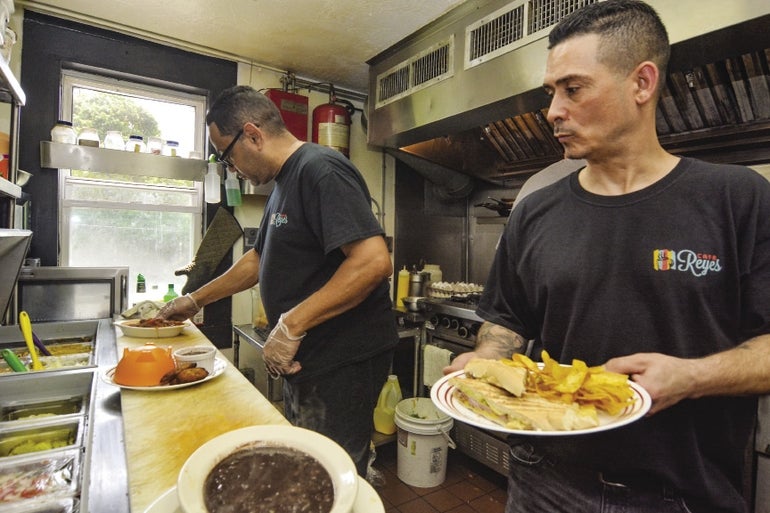
What to expect in 2020: Deaths of despair issues need to be addressed
 Photo I Edd Cote
Café Reyes in Worcester was set up with the Hector Reyes House to provide employment for Latino men in recovery.
Photo I Edd Cote
Café Reyes in Worcester was set up with the Hector Reyes House to provide employment for Latino men in recovery.
They’re called deaths of despair – suicide and addiction, including alcoholism and opioids. They’re taking a major toll in Massachusetts and nationwide, and public health officials and lawmakers will continue their fights against these problems in 2020.
Can the state make greater dent in opioid death rate?

Three-quarters of the way through 2019, opioid deaths were down 6% compared to last year, indicating public health efforts are paying off, including the Massachusetts Prescription Monitoring Program, which tracks such prescribed drugs. The program received 40% fewer Schedule II opioid prescriptions – including for fentanyl, OxyContin and Percocet – in the first nine months of 2019 compared to the previous year. The state says it has doubled spending to address the opioid crisis, including adding more than 1,200 new treatment beds. But make no mistake, there’s still a long way to go. Deaths topped 2,000 for the third year in a row, compared to less than 700 a decade ago.
Intractable problems of addiction, suicide
Deaths of despair are responsible in large part for the national life expectancy taking an unexpected drop the past few years. The Massachusetts mortality rate rose 12% from 2010 to 2017, bringing an estimated 1,155 extra deaths over that time, according to a study in the Journal of the American Medical Associates. Nationwide, that extra death count is a projected 33,000. While legislative action has aimed at reducing the opioid rate, the same can’t be said for suicide and other deadly issues.
Vaping issues fight for officials’ attention, too

A national outbreak of illnesses traced to use of e-cigarettes – more than 2,400 sickened and 52 killed as of Dec. 10 – has spurred public action against vaping. So has polls showing just how many youth have taken up the habit: In just two years’ time, use among high schoolers nationwide spiked from 11.7% to 27.5%. Flavored e-cigarettes is seen as a major culprit in young people taking up vaping. Two-thirds of high schoolers said in a survey they used fruit-flavored e-cigarettes, and another 57% said they used mint or menthol flavor. Massachusetts will have the chance to prove whether legislative action can work. The state is the first to restrict the sale of flavored nicotine vaping products to licensed smoking bars, which was accompanied by a 65% tax on vaping products.









0 Comments